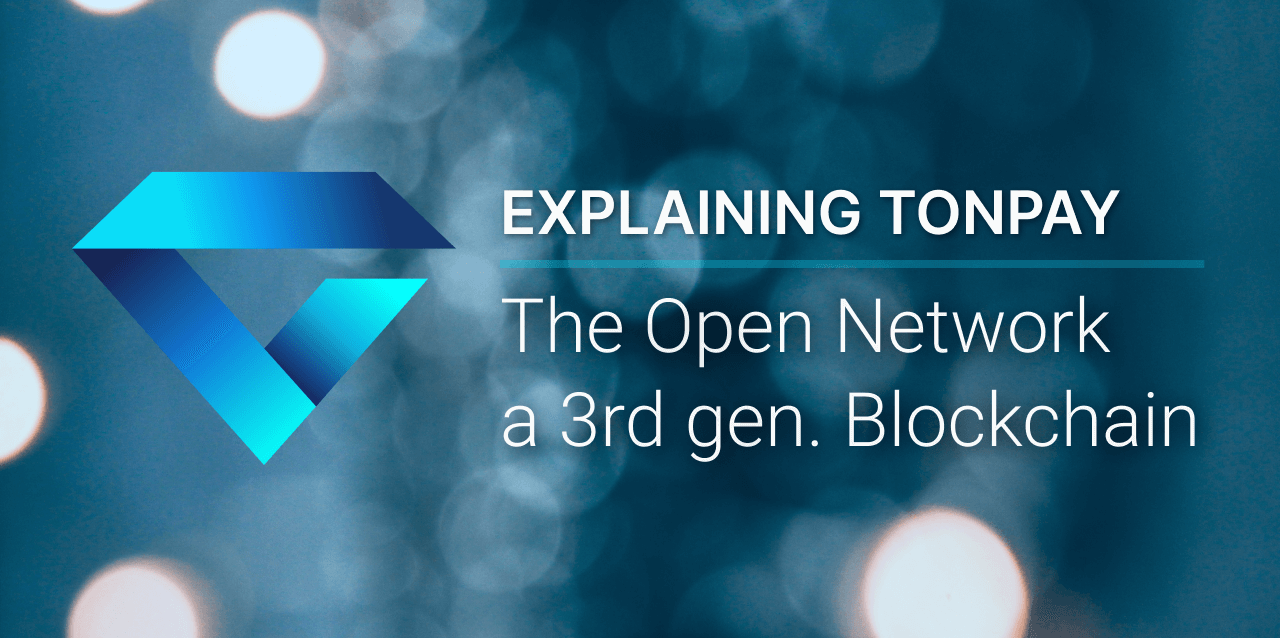Aug 14, 2023, 19:00 UTC
The Open Network — a 3rd generation Blockchain

In our previous post, we started to talk about the Web3 and the first two generations of Blockchain systems. Building on the foundation of the 2nd generation blockchains, like Ethereum, the primary purpose of the 3rd generation is to improve the scalability and interconnectivity of the blockchain solutions to support their mass adoption. For a Blockchain to be a good foundation for the future of Web — Web3, it must be truly scalable and support billions of simultaneous users and even more interactions (transactions). The world has 5 billion Internet users today, and we must prepare for this if we plan for mass Web3 adoption.
Ethereum was an amazing revolutionary technology, but it wasn't built for scalability directly. Currently, it processes only 24 transactions per second on its main network, each costing around a dollar — an unacceptable price for a simple value transfer. That's why 3rd generation Blockchain solutions like Cardano and Polkadot came to be, both designed by original (but separate) Ethereum co-founders in order to solve the aforementioned problems.
The more recent addition to the 3rd generation blockchain landscape was The Open Network (TON), designed by Dr. Nikolai Durov from Telegram. Based on the ideas of other modern blockchain solutions, TON has a unique and elegant architecture design that can handle a tremendous amount of users both in terms of flexibility and throughput. The technology supports exceptional horizontal scalability by allowing the network to be split into almost unlimited (2^60) shards (smaller fragments of a network that are easier to process in parallel). The asynchronous nature of the TON smart contracts and their limited storage capacity requires splitting huge contracts (a widespread problem in Ethereum) into many smaller ones. This enables much better performance optimization due to the more even workload distribution.
Right now, the TON network has only two operating blockchains: a master chain, a fundamental core chain that is used to secure sub-chains (aka workchains) and to provide a core network functionality, and a single workchain called base-chain that is used for most of the current TON applications and transactions. Both chains support TON Virtual Machine (TVM) smart contracts, but the base chain is significantly cheaper to use. The most flexibility comes from the fact that TON can support up to ~1 billion sub-chains, and every such workchain can implement its own virtual machine technology. At the same time, all the workchains can communicate with each other and rely on the core network security and functions. This, in theory, allows e.g. to run Ethereum Virtual Machine (EVM) with its widely popular Solidity programming language inside The Open Network in its own workchain (with some limitations) or to implement a custom blockchain for some projects with their own operating rules. The possibilities are truly endless here.
When it comes to cryptocurrency, the system supports up to 4.2 billion native cryptocurrencies, including the Toncoin itself, that could be created by the Blockchain developers. Additionally, the Jetton standard (similar to ERC20 in Ethereum) allows to very easily create custom tokens (called "jettons") without any limitations. The operations in TON are also very cheap. A simple value transfer in the base chain costs less than a cent (at the time of writing). Also, the official TON bridges allow to safely move Toncoins as well as several popular tokens from Ethereum and Binance Smart Chain (BSC) blockchains to The Open Network and back. The bridges (oracles) concept could also be extended to support not only cryptocurrency transfers but also the transfer of data and events from the other Blockchains and enable much better integration with the external systems.
And the final part of the Web3 success equation that can dramatically help with the mass adoption of The Open Network is the Telegram messenger itself, which is expected to have 1 billion monthly active users by 2024. Telegram and Pavel Durov have already shown great interest in the TON technology (not surprising considering its origin) by integrating it into several parts of the Telegram application and launching a dedicated NFT marketplace called Fragment, where Telegram usernames and anonymous phone numbers can be purchased.
As great proponents of decentralization, privacy, freedom, and Web3 ideas, we at TONPAY see great potential in the combination of The Open Network and the Telegram Messenger that can provide a real adoption of the Web3 technologies by the major population and not only by the disjoint groups of the crypto enthusiasts.
We are going to share our approach and vision in the following posts.
